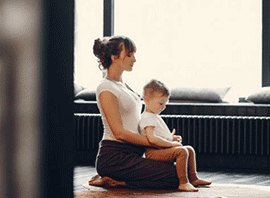Here comes a mysterious question: What are the responsibilities of the dad-to-be? What do dads, or partners, do when you’re giving birth?
If you’ve heard about your friend’s or family’s stories about their first childbirth, you’d know how much chaos there can be in the hospital room when moms are giving birth. Imagine already panicking about this first painful experience; you certainly don’t want your partner to be clueless about what they should be doing. Oh, and you’ll be surprised how even your smart, considerate (aka perfect) husband can be oblivious at times like this too.
"As I was lying in the delivery room giving birth to our first child about a month before my due date, waiting for the rest of the action to start, my husband decided to head to Best Buy to buy a video camera so he could tape our son's birth. I'll never forget his last words before leaving the room: 'Don't do anything until I get back!'" — Kathie G. on Women’s Health Magazine.
“My husband complained he was tired. He fell asleep. The nurse woke him up when it was time to push. He gets up and pulls out his phone, I assume to call family. All of a sudden, I hear Candy Crush music playing. It’s been 5 years and I STILL get angry when I think about it.” — katedean on what to expect.
You get the idea. Now grab your partner or send them this article - both of you need it.
What can Dad-to-Be or Partners Prepare for Labour?
- Ensure you understand her birth plans: She typically has a plan in mind, so take time to study it and be prepared. Familiarize yourself with the safest and quickest route to the hospital or birth centre, conduct a trial run, and time yourself.
- Assist in packing the essentials: Include disposable underwear, bed pads, nursing pads, socks, warm clothes, IDs, toiletries, baby wipes, and your phone charger for potential overnight stays. Explore Mamaway’s Hospital Edit for a comprehensive list of essentials.
- Time the contractions: Familiarize yourself with the 7 Signs of Labour to distinguish between false and true labour. Record the duration and frequency of contractions, noting that Braxton Hicks contractions are short-lived and don't intensify. True contractions progressively strengthen and lengthen. Maintain a record of each contraction's duration for your doctor's reference.
- Stay peaceful and calm: When your partner's water breaks or contractions intensify, avoid panicking and adding chaos to the room. Instead, proactively calm your partner by offering gentle massages on her neck or back to help her relax.
- Distract your partner: Labour can be exhausting, especially for first-time mums who may spend over 10 hours in the hospital. Provide distractions like games, movies, or a playlist to lighten her mood during the long, stressful day.
What a Dad-to-Be or Partner Can Do at Each Phase of Labour?
Labours occur in 3 phases: the first contraction, the pushing and delivery of the baby, and finally the delivery of the placenta. It’s helpful to understand what’s happening at each stage of labour and how you can assist. (We recommend reading our Childbirth Trilogy if you haven’t already, starting from Childbirth Trilogy #1: The 3 Stages of Labour)
First Phase of Labour
Stage 1: Early Labour
This phase can last from 8 to 12 hours or even days for first-time mums. As a dad-to-be or partner, your role is to provide distraction and support to help them relax as contractions progress and they begin experiencing pain in their back and abdomen.
Stage 2: Active Labour
As contractions become more rhythmic, stronger, and more frequent, it's time to take your partner to the hospital or birth centre. The cervix will continue to dilate to 7 cm during this stage, with contractions lasting 45-60 seconds and occurring 3-5 minutes apart. Offer emotional support, assist with back massages, help find a comfortable position, play music, and ensure your partner stays hydrated.
Stage 3: Transition Labour
As the cervix dilates to 10 cm, the pain intensifies as your moves their head toward the birth canal. Your partner may begin panting, shouting, or swearing - don’t be alarmed. Practice breathing exercises together to maintain stable breathing and help her lie on her back to distribute stress on her pelvis, cervical spine, and cervical lips.
Second Phase of Labour
This is the phase where you welcome your little one to the world! The second phase of labour is shorter, lasting from minutes to 1-2 hours, but there’s a lot you can do here:
- Ask if you can record the birth on camera or video
- Inquire about cutting the cord
- Assist in asking the doctor if your partner wishes to have skin-to-skin contact after birth or breastfeeding
Third Phase of Labour
After delivering your baby, the next step is the delivery of the placenta, so don't become too focused on your newborn and forget about your partner! She may feel chilly or shaky at this stage, so offering a warm blanket or some warm water can provide comfort. Reassure her about the baby's condition as well.
Last but not least, childbirth is a stressful and exhausting experience - it's essentially a long, difficult journey. You should conserve your energy, stay attentive to your partner's needs, and remain emotionally present throughout the process to make it as comfortable as possible.
Stay strong, Dads and Mums-to-be!





















Validate your login
Sign In
Create New Account